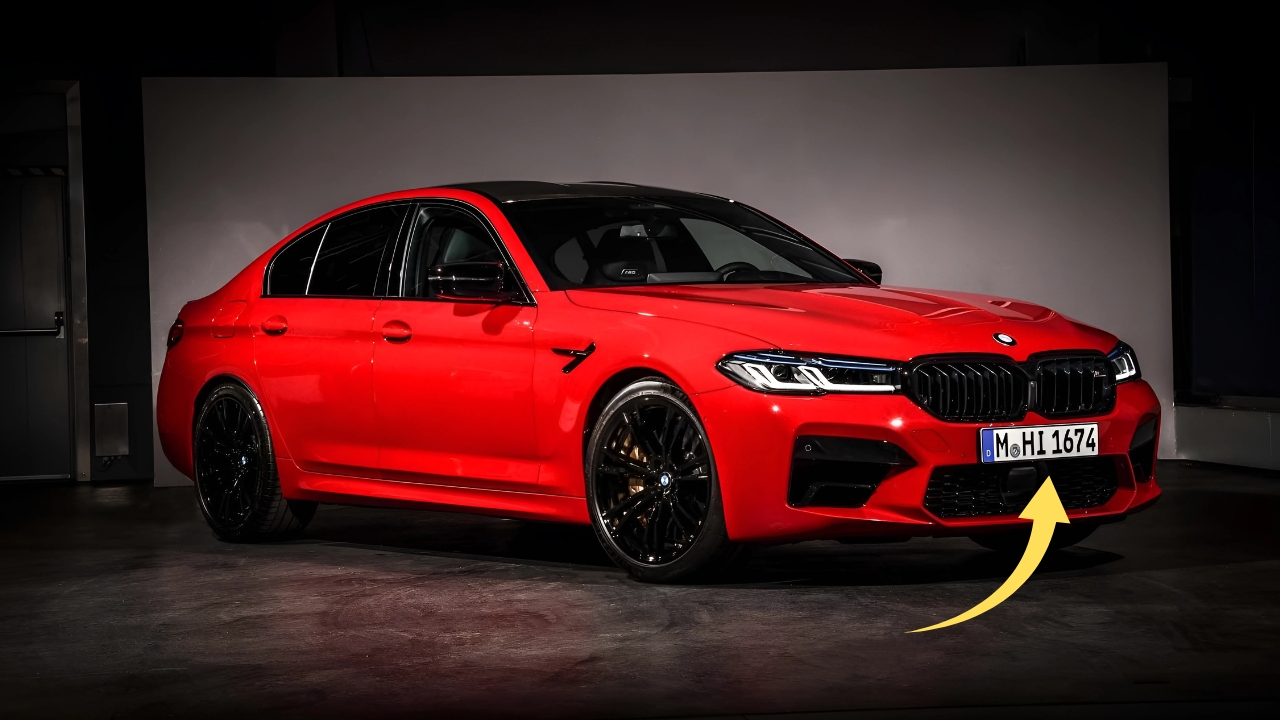BMW M5 : Something unexpected happened in America’s luxury car showrooms this year. The BMW M5 Touring started outselling its sedan counterpart, surprising even BMW executives who never saw this coming.
For decades, Americans showed little interest in wagons, especially expensive ones. Yet the M5 Touring changed everything, proving that performance enthusiasts were hungry for something different than another SUV.
The Wagon That America Never Expected to Love
BMW brought the M5 Touring to American shores for the first time in 2025. This wasn’t just another car launch – it represented a bold gamble on changing American tastes.
The company originally planned for wagons to make up only one-third of total M5 production. Instead, sales split nearly 50-50 between sedan and wagon, shocking industry observers.
Breaking Down the Sales Numbers
Frank van Meel, BMW’s M division boss, revealed startling news at recent automotive events. “We have a higher demand in the US for the Touring than for the sedan,” he told reporters.
This trend runs completely opposite to European markets, where sedans still dominate wagon sales. American buyers apparently craved the forbidden fruit that BMW had kept away for so long.
The success forced BMW to increase production for both body styles. Sylvia Neubauer, BMW’s VP of Customer, Brand, and Sales, confirmed that demand exceeded all expectations.
Even with higher production numbers, waiting lists continue growing. Dealers report customers willing to wait months for their performance wagon to arrive.
What Makes the M5 Touring So Special
The M5 Touring isn’t just a sedan with a longer roof. BMW engineered this wagon to deliver serious performance while maintaining everyday usability.
Under the hood sits a 717-horsepower hybrid powertrain combining a twin-turbo V8 with an electric motor. This setup rockets the wagon from zero to 60 mph in just 3.5 seconds.
Hybrid Power That Actually Works
The plug-in hybrid system offers more than just impressive numbers. Drivers get 25 miles of pure electric range for silent city driving.
When performance calls, the gas engine and electric motor work together seamlessly. The Boost Control function delivers instant acceleration at the touch of a paddle.
BMW’s engineers integrated the electric motor directly into the eight-speed transmission. This placement provides immediate torque while maintaining the car’s balanced weight distribution.
The system switches between different drive modes automatically. HYBRID mode balances efficiency and performance, while ELECTRIC mode runs whisper-quiet through neighborhoods.
Storage Space That Surprises
Behind the rear seats, the M5 Touring offers 17.7 cubic feet of cargo space. Fold those seats down, and storage expands to an impressive 57.6 cubic feet.
This beats the sedan’s trunk capacity by a significant margin. Families can pack for weekend getaways without leaving performance behind.
The automatic tailgate makes loading easier than traditional sedans. Practical daily use becomes possible with this level of storage flexibility.
Even with the rear seats up, the wagon swallows golf bags, groceries, and sports equipment. Weekend trips no longer require roof boxes or trailer hitches.
The Competition Landscape
The M5 Touring entered a market with limited direct competition. Mercedes-AMG stopped selling the E63 Wagon in America, leaving a significant gap.
Audi’s RS6 Avant remains the primary rival, but that model nears the end of its production run. This timing gave BMW a strategic advantage in the performance wagon segment.
Pricing Strategy That Works
At $122,675, the M5 Touring costs only $2,000 more than the sedan. This modest premium makes the wagon an easy choice for buyers wanting extra space.
Compared to the Audi RS6 Avant’s $126,600 starting price, the BMW offers compelling value. The hybrid powertrain also provides better fuel efficiency than Audi’s pure gasoline setup.
Standard equipment includes a Bowers & Wilkins sound system, panoramic sunroof, and BMW’s latest iDrive 8.5 infotainment. The M Driver’s Package raises top speed to 190 mph for track enthusiasts.
Executive Package buyers get heated and ventilated seats, power sunshades, and parking sensors. These luxury touches justify the premium pricing for demanding customers.
Why Americans Chose the Wagon
Several factors contributed to the M5 Touring’s unexpected success in America. The novelty factor played a significant role, as BMW hadn’t offered an M5 wagon here before.
SUV fatigue also influenced buying decisions. Performance car enthusiasts grew tired of tall, heavy crossovers that prioritized image over driving dynamics.
The Forbidden Fruit Effect
For years, Americans watched European car reviews featuring stunning M5 wagons. This exclusivity created desire that BMW finally decided to satisfy.
Social media amplified the excitement when BMW announced the Touring’s arrival. Enthusiast communities celebrated the decision with overwhelming positive response.
The wagon represents something different in a market dominated by SUVs. Buyers appreciate standing out while maintaining practical functionality.
European styling cues appeal to American tastes more than ever. The long roofline creates an elegant silhouette that photographs beautifully.
Practical Performance Appeal
Unlike SUVs, the M5 Touring maintains a low center of gravity for better handling. Track days become possible without sacrificing daily usability.
The wagon’s lower stance looks more athletic than tall SUVs. Enthusiasts appreciate the authentic sports car proportions combined with storage space.
Fuel efficiency matters more than before, especially for expensive premium cars. The hybrid system offers guilt-free performance in an environmentally conscious market.
Charging capability adds convenience for short trips around town. Many buyers appreciate the silent electric mode for early morning departures.
Engineering Excellence Behind the Success
BMW’s M division applied decades of motorsport experience to the Touring’s development. The M xDrive all-wheel-drive system provides optimal traction in all conditions.
Adaptive suspension adjusts automatically to road conditions and driving style. Rear-wheel steering improves both low-speed maneuverability and high-speed stability.
Weight Management Challenges
At 5,530 pounds, the M5 Touring carries significant mass for a performance car. However, the hybrid powertrain’s immediate torque helps mask the weight penalty.
BMW reinforced the body structure around the cargo area for optimal rigidity. These modifications maintain the precise handling that M cars are known for.
Advanced damper technology adapts to driving conditions in real-time. The suspension balances comfort for daily driving with track-ready performance capabilities.
Carbon-ceramic brakes reduce unsprung weight while providing fade-resistant stopping power. The optional brake package saves 55 pounds compared to steel rotors.
Interior Technology Integration
The cabin features BMW’s latest curved display technology with M-specific graphics. Voice control and touch inputs provide intuitive operation while driving.
Four-zone climate control keeps all passengers comfortable during long journeys. The panoramic glass roof creates an airy feeling despite the wagon’s sporting character.
M multifunction seats offer extensive adjustment for optimal driving position support. Long-distance comfort matches the car’s grand touring capabilities.
Premium materials throughout the interior justify the luxury car pricing. Attention to detail shows in every surface and control interface.
Impact on BMW’s Future Plans
The M5 Touring’s success influences BMW’s decisions about other wagon models. The M3 Touring remains unavailable in America, but that could change.
Andreas Meyer, BMW’s VP of Product, hinted at possibilities for future generations. “If the M5 Touring does well enough, maybe the next generation M3 Touring could come to America,” he suggested.
Market Signal for the Industry
Other luxury manufacturers are watching BMW’s wagon experiment closely. The success could encourage renewed investment in performance wagon development.
Mercedes-Benz might reconsider its decision to abandon the American wagon market. Audi already plans a successor to the RS6 Avant for future model years.
The trend could extend beyond Germany to other luxury brands. Customer preferences seem to be shifting away from SUV dominance.
Performance wagon sales might create a new niche market. Premium manufacturers could find profitable opportunities in this specialized segment.
The Road Ahead for Performance Wagons
Early sales figures suggest the M5 Touring has staying power beyond initial novelty. Repeat customers and word-of-mouth recommendations drive continued demand.
BMW’s production capacity remains the primary constraint on sales growth. The company continues adjusting output levels to match unexpected demand patterns.
Long-term Market Implications
The success story could reshape American automotive preferences permanently. Performance wagon acceptance might influence other manufacturers’ product planning.
Dealer networks report strong interest from younger buyers seeking alternatives to SUVs. This demographic shift could sustain wagon sales for years to come.
Environmental regulations favor hybrid powertrains over pure gasoline engines. The M5 Touring’s efficient performance aligns with future market requirements.
Luxury car buyers increasingly value uniqueness over conformity. The wagon’s distinctive character appeals to consumers wanting something special.
Real-World Owner Experiences
Early M5 Touring owners report high satisfaction with their purchase decision. The combination of performance and practicality exceeds expectations in most cases.
Track day participants appreciate the wagon’s capability without space compromises. Weekend racing becomes possible while maintaining family car functionality.
Daily Driving Impressions
The hybrid system’s silence surprises many owners during electric mode operation. Morning commutes can proceed without disturbing neighbors.
Cargo space proves more useful than anticipated for various lifestyle needs. Costco runs and vacation packing become significantly easier than with sedans.
The wagon’s lower profile compared to SUVs provides parking advantages in urban environments. Garage clearance issues disappear with the practical height.
Fuel efficiency impresses owners accustomed to pure gasoline performance cars. Hybrid operation reduces running costs despite premium fuel requirements.
The Wagon Renaissance
The M5 Touring’s success might herald a broader wagon renaissance in the American market. Consumer attitudes toward practical performance cars appear to be shifting.
BMW’s bold decision to bring the wagon stateside has paid dividends beyond expectations. The risk-taking demonstrated industry leadership in reading changing customer preferences.
Short FAQs
Q: How much does the BMW M5 Touring cost? The starting price is $122,675, which is $2,000 more than the sedan version.
Q: What kind of engine does the M5 Touring have? It features a 717-horsepower plug-in hybrid system with a twin-turbo V8 and electric motor.
Q: How fast can the M5 Touring accelerate? It reaches 0-60 mph in 3.5 seconds with a top speed of 155 mph (190 mph with M Driver’s Package).
Q: How much cargo space does it offer? The wagon provides 17.7 cubic feet with rear seats up and 57.6 cubic feet when folded down.
Q: Can it run on electric power alone? Yes, it offers up to 25 miles of pure electric driving range for city use.
Q: Why is it outselling the sedan in America? Americans appreciate the novelty factor, practical space, and alternative to SUV dominance.
Q: Will BMW bring the M3 Touring to America next? BMW hints that M5 Touring success could influence future M3 Touring availability decisions.
Q: How does it compare to the Audi RS6 Avant? The BMW offers similar performance with lower pricing and hybrid efficiency advantages.
Q: Is the wagon heavier than the sedan? Yes, it weighs 140 pounds more at 5,530 pounds total curb weight.
Q: What makes it different from regular SUVs? Lower center of gravity, better handling dynamics, and authentic sports car proportions with wagon practicality.

